As businesses realize the importance of building and sustaining diverse teams, diversity recruitment has become a high priority for business owners and hiring managers. In the race to fulfill diversity hiring goals or to appear diverse and inclusive, many have fallen into the trappings of “performative hiring” and need help retaining the underrepresented talent they hired only months ago.
Worse yet, some underrepresented talent and/or historically marginalized talent are dropping out of the hiring process because the process itself signals exclusion, inactive listening, and shortsightedness. Now more than ever, businesses must ensure that all job seekers feel that the hiring process was made for them while finding the best person for the role.
Job seekers evaluate businesses for equity and inclusion during the hiring process
Right now, the labor market is going through a seismic shift with job seekers at the helm. Applicants are aware that they are in high demand and they have more options now than ever before. More than that, underrepresented job seekers are in high demand due to the widespread business priority to hire more diverse teams. So, it follows that they will be selective and intentional about where they choose to work next.
Job seekers who have prioritized working in a diverse, equitable, and inclusive work environment are looking at the language in job descriptions. They’re looking for an easy and accessible application process, rather than the 10-page online application form. They’re taking note of how they feel during and after the initial conversation with hiring managers – if they feel listened to and if they are given enough time in the conversation to speak.
They’re also looking at the diversity composition of the business, who leads the business, who the business serves, and its broader community. In short, they’re looking at the full picture – including how hiring managers communicate and interact with them during the hiring process.
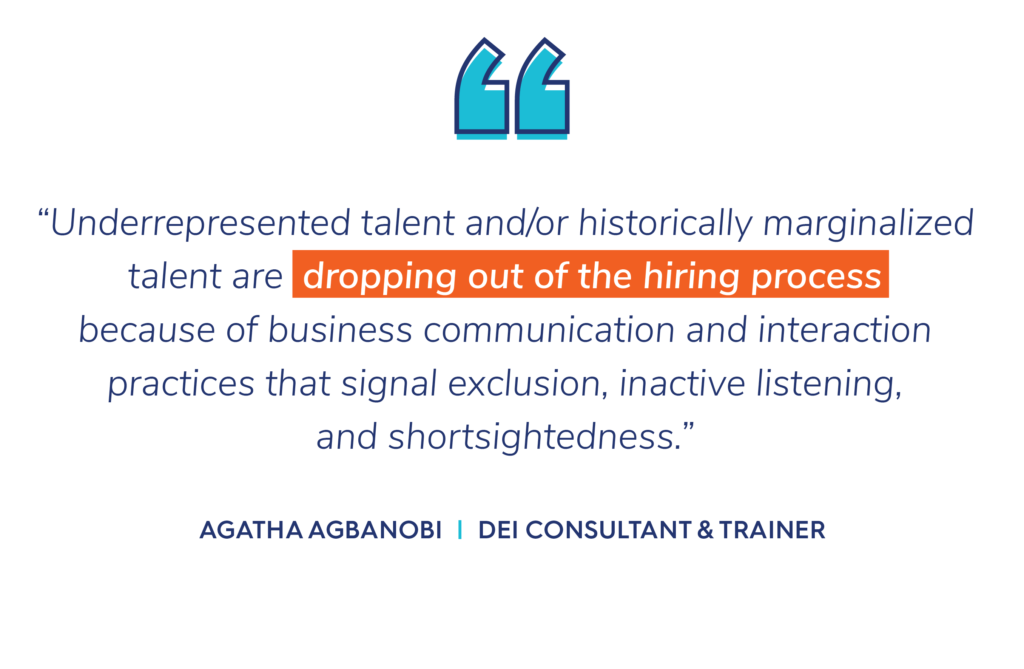
How to ensure the hiring process is inclusive, intentional, and impactful for all job seekers
Potential employees want to be able to see themselves at every level of the business both in the present and future. Representation matters especially for those who are not used to seeing themselves reflected in leadership. However, this can be difficult for businesses that do not yet have the budget to increase the size of staff for equal representation across demographics, education, and socio-economic backgrounds. So how do small businesses start sending the right message about their value for diversity, equity, inclusion, and belonging without the representation and employee experience to show for it?
If you’re wondering how you can do better, you’re not alone! No one has diversity, equity, inclusion, and belonging (DEIB) in hiring all figured out. Everyone is learning as they go from reading books to attending conferences and webinars to coaching sessions. Businesses can and should maintain a mindset of continuous learning and improvement. Give yourself the gift of patience and time while on the path to the right inclusive hiring process for your business. Here are some initial practical steps to take.
1. Interrupt your own biases.
All the points of contact with job seekers are crucial. How you communicate with them, from the job description to the interview process, is interpreted as a signal of how they will be treated as hired employees. As a business owner and/or hiring manager, you must have foundational knowledge and practical tools for mitigating potential biases in your hiring process and inclusive communication and interaction practices.
Luckily, there are many great resources that can help, such as Bias Interrupters for Managers and Bias in Hiring from the Center for Worklife Law. It might also be helpful to find an affordable Diversity, Equity, and Inclusion (DEI) practitioner who is able to provide training or coaching sessions that are customized to small business owners who are at the beginning of their DEI journey. Firms such as Optimal Leadership provide custom training and coaching sessions specifically related to sourcing and hiring strategies that attract diverse talent.
As a business leader, it will always start with you. You must recognize your own conscious and unconscious biases before being able to interrupt them.
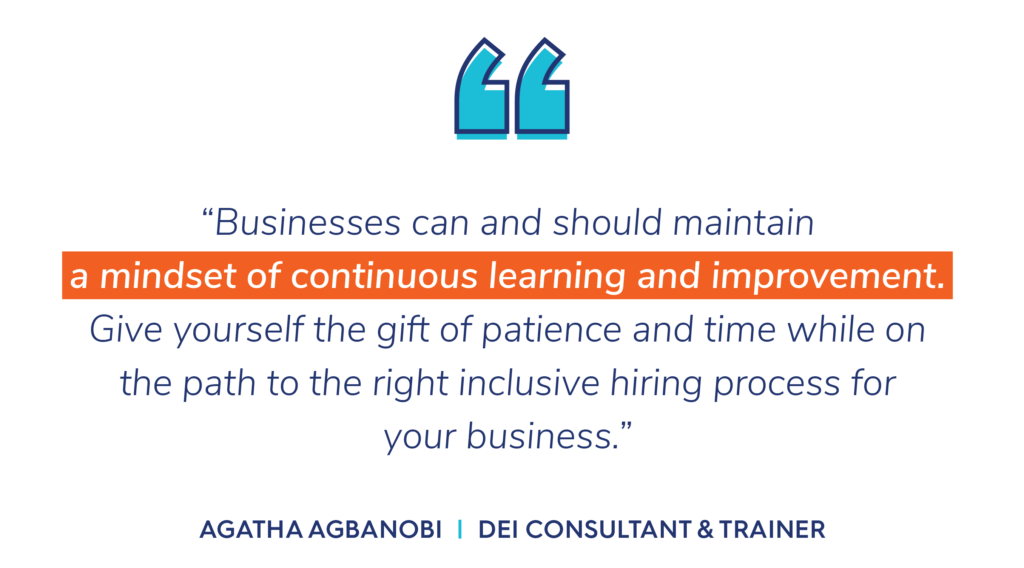
2. Be aware of your company culture.
A business’ culture is on display when job seekers visit its website, read the description of open roles, visit the corporate office, or ask insightful questions. As a business owner, it’s important to remember that every part of your business is an extension of who you are. Your conscious and unconscious values and beliefs will naturally seep into the way you source, recruit, and hire.
It might be helpful to take a step back and evaluate your business culture. Seek out the assistance of a peer or friend who is not linked to the business. Determine if your business has a culture that is inviting and attractive to job seekers of diverse cultural, ethnic, and socioeconomic backgrounds or if there is only one type of profile that seems to be hired for all the roles. Your awareness of this will allow you to be more intentional as you determine how you will attract and source diverse talent.
3. Know who you want to attract.
While knowing who you want to attract seems obvious, it’s worth slowing down for this step to ensure that the people you attract will match the candidate profiles you want. For example, sometimes job descriptions will have statements such as “must be data-driven” or “ambitious and self-reliant” which reflects who job seekers are, rather than what they can do. Because these requirements or preferred qualifications reflect personality traits, it can lead to affinity-biased hiring.
Businesses can easily end up with a homogenous culture of people who think and operate in the same way, missing out on the immense opportunity of having diverse minds take the business to the next level in innovative ways. Consider centering your criteria on what a candidate can do first, rather than trying to seek out personality traits, which can be difficult to evaluate anyway.
Once you have identified the abilities you want your ideal job seeker to have, you should ensure they are inclusive of all identities. This means that one’s identity (gender identity, race, socioeconomic status, etc.) should not be a barrier to their ability to do the role you are advertising.
For example, the ability to “work under pressure in a fast-paced environment” is exclusive of groups within the disability and the neurodivergent community. It also promotes the idea that only those who can physically and mentally move quickly under pressure can succeed in your business. If speed and pressure are truly vital to the role, provide accommodations for those who do not move as quickly as others, giving them the opportunity to still give you their best work. Accommodations should be provided for any and all job activities that are inherently exclusive. Ensure that you list them in the job description and ads so that those who may qualify will not be deterred from applying.
Lastly, it’s important to codify the job requirements in an evaluation tool such as an ideal candidate profile, before you begin the recruitment process. This will help mitigate implicit bias in who you reach out to and how you score their application. More often than not, we subconsciously activate “like me” bias when we write job descriptions, thinking through the lens of how we would operate in the role. Instead, we should list the core requirements that will lead to the value add or output we want from employees.
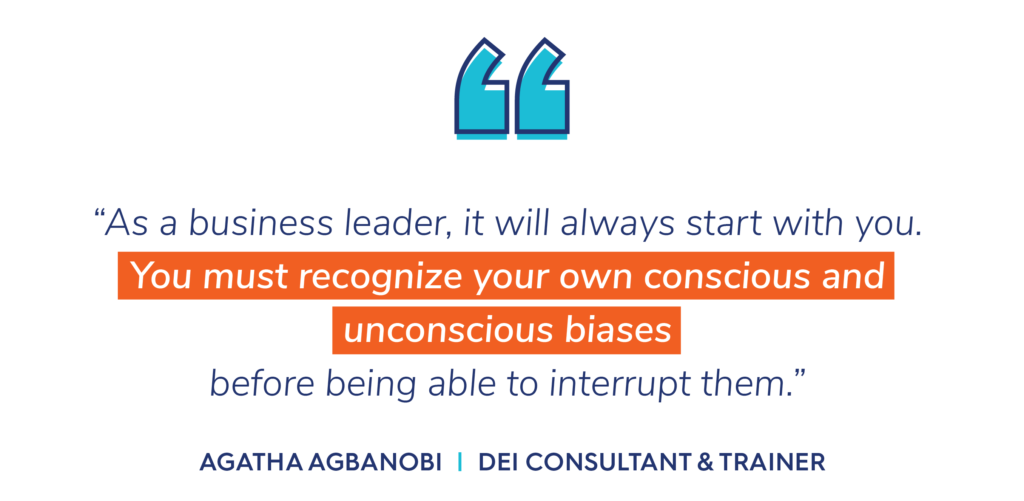
4. Use inclusive language in the job description.
The use of inclusive language in communications with job seekers has become increasingly popular. There are apps that can identify non-inclusive language or language in job descriptions that would discourage historically marginalized groups from applying.
For example, studies have shown that women and men respond differently to different words on a job description. While women are often deterred by masculine words such as dominant, competitive, and self-reliant, men are not turned off by either masculine or feminine words such as commitment, dependable, relationships. Because of this, it is important to avoid having a masculine-coded (an overemphasis of masculine words) job description. Tools such as Texito or the Gender Decoder for Job Ads might be helpful for signaling the gender inclusivity of your job description.
It is also important to note that there are biases that an app may not detect, such as maternal wall bias or parental wall bias, which is a form of bias that mothers and/or parents encounter when it is believed that they are not as competent or committed to their job as candidates without children. It is important to think through whether mothers, single parents, or parents with special needs children might be discouraged to apply due to the language used. These job seekers are more apt to apply to roles that are flexible in nature and include remote work options.
Women, in general, are more likely to respond to job descriptions that include a salary range than to those without. Women love the transparency of a salary range to determine how they will negotiate an offer. Statistically, women negotiate far less than men. Having a salary range visible in the job description might encourage women to negotiate just as much as men do.
Because this step might seem a bit overwhelming at first, I recommend forming or outsourcing a small diverse panel of reviewers to evaluate your job description for inclusive language, whether or not you use an app.
5. Diversify your referral networks.
Small businesses rely heavily on referral networks for all sorts of reasons, including budget limitations. However, referral networks often lead to homogenous candidate pools because those you know often resemble you, your ethnic or cultural background, the way you think, where you went to school, and so forth. You will have to make a concerted effort to diversify your network and those you enlist in your referral programs.
Broaden your network to include individuals in your local advocacy groups and organizations who support historically marginalized groups. For example, the Young Women’s Alliance (YWA) is a nonprofit organization that centers on the professional and career advancement of young Black and Brown women in Austin, Texas. Small local businesses in Austin might benefit from partnering with leaders within YWA to identify organization members who might be interested in your open roles. You might also find Diversity & Inclusion groups on social media networks such as LinkedIn and Facebook helpful in narrowing down your search.
Practically speaking, you will have to move out of your comfort zone to make new connections, network, and learn. This is the best way to diversify your referral network, including those who participate in your referral programs.
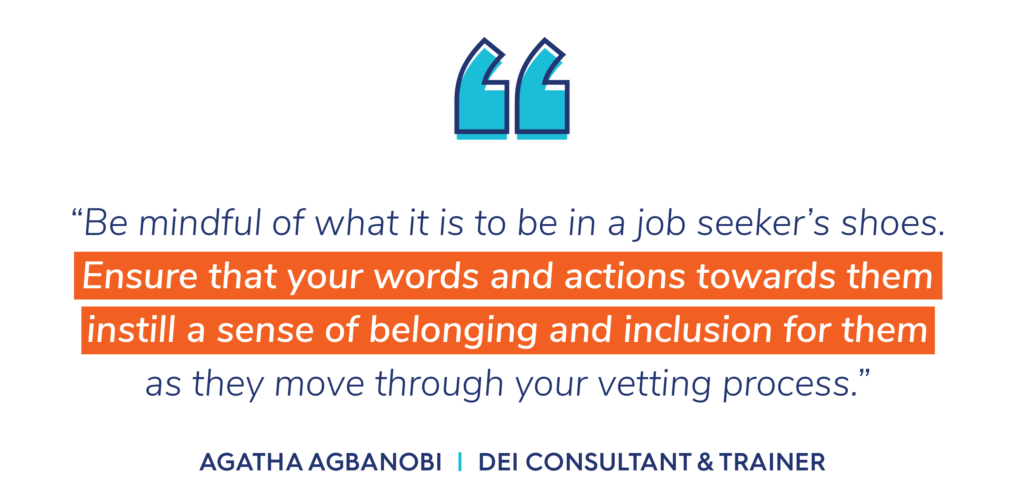
6. Be aware of how you communicate and interact with all candidates.
Employers must invest in creating an exceptional candidate experience at every point in the hiring process in order to remain competitive in today’s job market. This means it’s important to be mindful of every email communication, phone conversation, and in-person interaction with job seekers.
While this is a rule of thumb for most, many still struggle with inclusive communication and interaction practices. Some of these include introducing yourself with your pronouns during your phone screen, making eye contact, giving every candidate the same amount of response time per question, giving all candidates access to the same interview questions that they should expect to be asked, over-communicating the expectations of the interview process to all candidates through a standard operating procedure (SOP), being mindful to treat each candidate the same level of dignity and respect, etc.
Sometimes all it takes is one microaggression or the repeated act of asking a candidate to clarify what they have said one too many times to count. Job seekers need to feel that they are at the center of the hiring process once you have convinced them to apply. It takes physical, emotional, and intellectual stamina to apply to job after job with the possibility of being rejected each time. Be mindful of what it is to be in a job seeker’s shoes. Ensure that your words and actions towards them instill a sense of belonging and inclusion for them as they move through your vetting process.
7. Be clear about the rationale for each hire and evaluate for bias across diverse groups.
Once you have made your hiring decisions, review your rationale for each hire. Keep a record of your justifications for each hire as well as for those who didn’t make it past the final interview stage. Check to see if there are any patterns among the profiles of those you have hired.
For example, you might notice that those hired are mostly from startups or top-tier universities and are young white men and women, even though you blinded resumes and stuck to all of the advice presented in this article. In this case, it might be worth going back to the stage where most underrepresented or historically marginalized groups were screened out. Review the questions asked by both you and the job seeker during the interview process. Re-evaluate the responses. Might there have been a bit of unconscious bias in the way the job seeker’s responses were evaluated? It might also be worth reviewing questions asked about flexibility, timeline and capacity. These often hint at potential barriers for job seekers.
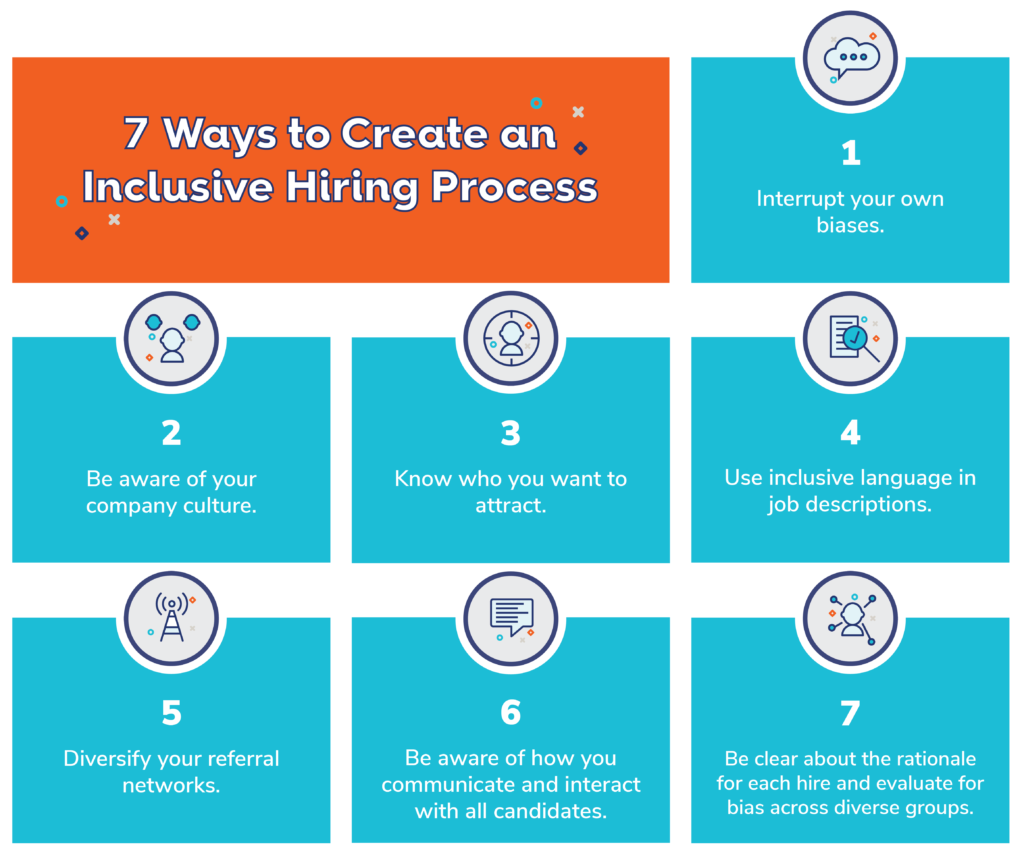
What matters most
While many of these tasks require business owners and hiring managers to go beyond “checking the box” of inclusive hiring tasks, try not to overcomplicate the process. Each step requires introspection and pushes us beyond the familiar when we reframe how we define a “qualified candidate.”
As I have advised small businesses and mid-to-large organizations on hiring processes, I have discovered that what matters is how potential employees feel during the hiring process. It matters most how smart and impactful your hiring systems are to building a diverse workforce, regardless of the size of the business. It matters most that you continuously lead with empathy, making genuine connections, and building trust with job seekers of all identities and backgrounds.
About the Author
Agatha Agbanobi is a DEI consultant, antiracism educator, and inclusive leadership coach for high-profile companies and organizations in the public and private sectors. She has researched, designed, and published equity-based curriculums for U.S. and international agencies. Through her consulting firm, Optimal Leadership, she has developed quality coaching content for teams and leaders to cultivate equitable and inclusive culture through thoughtful and transformative practices and processes.
